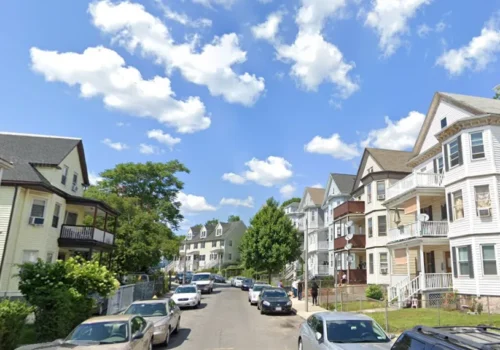
If you live in Brooksville, Florida and need professional addiction treatment to help you stop drinking alcohol, Springbrook Behavioral Hospital can help. We are a mental health rehab center that specializes in supporting adults with co-occurring disorders, including alcohol use disorder. In many cases, “alcoholic nose” is used to describe the most severe, end-stage form of rosacea, known as rhinophyma. Rhinophyma causes the nose to become even more disfigured due to the progressive dilation of the nasal vessels as well as the involvement of cysts and pustules. Alcohol addiction can lead to a number of side effects, which may include affecting rosacea.

The Impact of Social Influence: How the People You Hang Around Affect Addiction Issues

At this point, surgical intervention is typically necessary to correct the deformity. Few long-term studies have explored how often rhinophyma recurs after surgery, though limited research suggests that this is possible. Although studies vary, it’s thought that basal cell carcinoma occurs in 15-30% of people with rhinophyma. For https://ecosoberhouse.com/ these reasons, alcohol can aggravate symptoms of rosacea to a much more noticeable extent. Moreover, certain types of alcohol, like red wine, are more likely to trigger rosacea than others. However, these treatment methods have not been effective for reducing swelling or the appearance of bumps on the nose from rhinophyma.
- Stress, sleeplessness, dehydration, depression, improper diet, dry skin, and many other factors can agitate rosacea and rhinophyma.
- Environmental triggers are highly individual, meaning that what affects one person may not affect another.
- Mild rhinophyma is best suited for medication, which often includes topical anti-inflammatories and antibiotics.
- If you’re concerned that you or someone you know is drinking too much alcohol, Georgetown Behavioral Hospital near Cincinnati, Ohio can help.
Rhinophyma (enlarged nose)
The depth of shaving should leave enough skin adnexal structures at the wound surface to allow proper healing by secondary intention. Rhinophyma, also termed ‘end-stage rosacea’, is the most frequent phymatous manifestation of the disease. It starts as an accentuation of the normal tissue over the nose in adolescence and young adulthood.
- The symptoms will flare up for a few weeks or months and then slowly die down.
- At the minimum, a person with rhinophyma will have reddening or inflammation of the nose and cheeks.
- While the condition can’t be entirely reversed, various treatment options can help manage its symptoms and improve the nose’s appearance.
- The condition may also produce problems with a person’s eyes and eyelids as well as vision problems.
- The condition is much more common in males than females and usually develops between the ages of 50–70.
What Is Alcoholic Nose (Rhinophyma)? Red Drinker’s Nose
The physical impact of rhinophyma can be a point of self-consciousness for many individuals. After all, nobody really wants to stand out for something like a skin condition they can’t control. One way to help people seek the treatment they need and help them live out healthier and better futures is to provide people with the whole story and clear information. In the early stages of rhinophyma, these symptoms are mild to moderate.
Understanding Rosacea and Alcohol Consumption
Sunshine Behavioral Health strives to help people who are facing substance abuse, addiction, mental health disorders, or a combination of these conditions. It does this by providing compassionate care and evidence-based content that addresses health, treatment, and recovery. People who have this medical condition usually have a red nose that is swollen and bumpy, and which probably looks worse during a period of heavy drinking and chronic alcohol use. And while the red, bulbous “alcoholic nose” carries a social stigma, it is not directly caused by excessive alcohol consumption.
What Causes Drinker’s Noses?
Primarily, alcohol is a diuretic that dehydrates the entire body, including the face. Therefore, by stripping the face’s skin of moisture, alcohol contributes to the appearance of wrinkles and saggy, dry skin. Further, alcohol widens facial pores, allowing blackheads and whiteheads to form, which can contribute to acne.
- Continue on I-405 S for approximately 38 miles.Take exit 92 for Bake Pkwy.
- For many who have rosacea, oral antibiotics can be prescribed by your doctor.
- While the underlying causes aren’t fully understood, early treatment is considered the most effective solution.
- This is simply a way in which a close friend or loved one may be able to notice a physical change in a person’s skin condition that could indicate alcohol abuse.
- The term “alcoholic nose” has an interesting history and an even more interesting scientific explanation.
Posh people have got the right idea when it comes to diet
Because alcohol dilates blood vessels and damages the vascular system, it can aggravate rhinophyma and other types of rosacea. Not everyone with rosacea who develops thickened skin will go on to develop rhinophyma. But for people who do, having chronic infections is common, since fluids in the skin ultimately trap bacteria. alcoholic nose Alcohol abuse can be very disruptive, but it’s also treatable – we can help you with this at Gratitude Lodge. We offer immersive inpatient treatment for alcohol addiction at our luxury rehabs in Long Beach and Newport Beach, California. For starters, communicate with close friends and family about your situation.
Understanding Alcoholic Nose: Causes and Treatment
An alcoholic nose is a term people use to describe a swollen, red, or purple nose which they think comes from heavy drinking. It is part of a skin disorder called rosacea, which makes blood vessels in the face swell. A common misconception is that alcoholic nose is solely caused by excessive alcohol consumption. While many individuals with rhinophyma may drink alcohol, the condition is also present in those who do not, challenging the stigma that links alcohol consumption to the disorder.

Find An Addiction Recovery Center Today.
Though the causes of rhinophyma are unknown, it’s thought to be a severe form of a skin disease called rosacea. Some people with rosacea develop rhinophyma, but people without rosacea can have this disorder, too. Developing a skincare routine is especially important for those who have this condition, which may include some lifestyle changes. Be sure to use health care products that are designed for sensitive skin or are hypoallergenic. One option is topical metronidazole (Metrocream), a drug that reduces skin inflammation by inhibiting the generation of reactive oxygen species. While the idea that alcohol causes rhinophyma has been popularized in movies and illustrations, studies do not support this stigma.